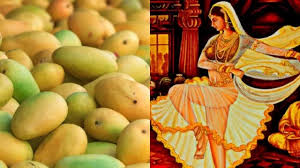How the Amrapali mango was named?
- Update Time : Thursday, June 13, 2024

TDS Desk:
Summer brings an abundance of native fruits, and among them, mangoes are in high demand.
Often called the king of fruits, mangoes are celebrated for their unique taste and rich nutritional value. There are many varieties, each with its distinct flavour.
Among the varieties available in the country, Amrapali mangoes are quite popular and often referred to as the queen of mangoes due to their exceptional taste. The naming of this mango variety has an interesting history.
5 refreshing and versatile ways to enjoy mangoes5 refreshing and versatile ways to enjoy mangoes
According to agriculturists and historians, Amrapali was named after an ancient Indian dancer. This name was chosen to honour her.
History tells us that around 2,500 years ago, there was a kingdom called Vaishali in ancient India. There is no proper record of her birth, parents and early life. She was given this name because she was found under a mango tree in the royal gardens of Vaishali.
Etymologically speaking, the name is derived from the two roots, “Amra” (meaning mango) and “Pallawa” (meaning tiny sprouts or leaves). Incidentally, her legend originated in the Jataka Tales, which were penned about 1,500 years ago.
A person named Mahanaman found her when she was a child. Lured by her great beauty, he abandoned his kingdom and set up residence in Ambara village, a small hamlet in Vaishali.
Ambapali, also known as Ambika or Amrapali, grew into a very beautiful woman and became the best dancer in the state. Her beauty and talent captivated everyone, leading to conflicts over her. Eventually, she was declared the city bride of Vaishali. In her later years, she is said to have spent her time in the company of Gautama Buddha.
In 1978, Indian mango researchers hybridized the Dasheri and Neelum mango varieties to create a new mango, which they named Amrapali in her honour. The Amrapali mango is known for its smooth skin, slightly pointed bottom, and rounded top. Small to medium-sized ripe Amrapali mangoes are yellowish-green with an orange, sweet flesh. These mangoes can be stored indoors for several days and are typically available from June 20 onwards.


















